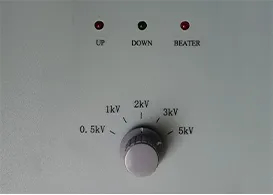 English
English



-
 Afrikaans
Afrikaans -
 Albanian
Albanian -
 Amharic
Amharic -
 Arabic
Arabic -
 Armenian
Armenian -
 Azerbaijani
Azerbaijani -
 Basque
Basque -
 Belarusian
Belarusian -
 Bengali
Bengali -
 Bosnian
Bosnian -
 Bulgarian
Bulgarian -
 Catalan
Catalan -
 Cebuano
Cebuano -
 China
China -
 China (Taiwan)
China (Taiwan) -
 Corsican
Corsican -
 Croatian
Croatian -
 Czech
Czech -
 Danish
Danish -
 Dutch
Dutch -
 English
English -
 Esperanto
Esperanto -
 Estonian
Estonian -
 Finnish
Finnish -
 French
French -
 Frisian
Frisian -
 Galician
Galician -
 Georgian
Georgian -
 German
German -
 Greek
Greek -
 Gujarati
Gujarati -
 Haitian Creole
Haitian Creole -
 hausa
hausa -
 hawaiian
hawaiian -
 Hebrew
Hebrew -
 Hindi
Hindi -
 Miao
Miao -
 Hungarian
Hungarian -
 Icelandic
Icelandic -
 igbo
igbo -
 Indonesian
Indonesian -
 irish
irish -
 Italian
Italian -
 Japanese
Japanese -
 Javanese
Javanese -
 Kannada
Kannada -
 kazakh
kazakh -
 Khmer
Khmer -
 Rwandese
Rwandese -
 Korean
Korean -
 Kurdish
Kurdish -
 Kyrgyz
Kyrgyz -
 Lao
Lao -
 Latin
Latin -
 Latvian
Latvian -
 Lithuanian
Lithuanian -
 Luxembourgish
Luxembourgish -
 Macedonian
Macedonian -
 Malgashi
Malgashi -
 Malay
Malay -
 Malayalam
Malayalam -
 Maltese
Maltese -
 Maori
Maori -
 Marathi
Marathi -
 Mongolian
Mongolian -
 Myanmar
Myanmar -
 Nepali
Nepali -
 Norwegian
Norwegian -
 Norwegian
Norwegian -
 Occitan
Occitan -
 Pashto
Pashto -
 Persian
Persian -
 Polish
Polish -
 Portuguese
Portuguese -
 Punjabi
Punjabi -
 Romanian
Romanian -
 Russian
Russian -
 Samoan
Samoan -
 Scottish Gaelic
Scottish Gaelic -
 Serbian
Serbian -
 Sesotho
Sesotho -
 Shona
Shona -
 Sindhi
Sindhi -
 Sinhala
Sinhala -
 Slovak
Slovak -
 Slovenian
Slovenian -
 Somali
Somali -
 Spanish
Spanish -
 Sundanese
Sundanese -
 Swahili
Swahili -
 Swedish
Swedish -
 Tagalog
Tagalog -
 Tajik
Tajik -
 Tamil
Tamil -
 Tatar
Tatar -
 Telugu
Telugu -
 Thai
Thai -
 Turkish
Turkish -
 Turkmen
Turkmen -
 Ukrainian
Ukrainian -
 Urdu
Urdu -
 Uighur
Uighur -
 Uzbek
Uzbek -
 Vietnamese
Vietnamese -
 Welsh
Welsh -
 Bantu
Bantu -
 Yiddish
Yiddish -
 Yoruba
Yoruba -
 Zulu
Zulu
potentiometric titration of strong acid and strong base
Potentiometric Titration of Strong Acid and Strong Base
Potentiometric titration is a powerful technique used to determine the endpoint of a titration by measuring the change in voltage (potential) of an electrochemical cell as a function of volume of titrant added. This method is particularly useful in the titration of strong acids and strong bases, where the sharp changes in pH can be accurately monitored.
In a typical potentiometric titration involving a strong acid, such as hydrochloric acid (HCl), and a strong base, such as sodium hydroxide (NaOH), the setup includes a pH electrode and a reference electrode submerged in the solution. As the titrant (NaOH) is slowly added to the acid, the system undergoes a neutralization reaction. The equation for the reaction can be represented as
\[ \text{HCl (aq)} + \text{NaOH (aq)} \rightarrow \text{NaCl (aq)} + \text{H}_2\text{O (l)} \]
The addition of NaOH increases the pH of the solution. Initially, the pH changes quite slowly as small amounts of base are added. However, as the equivalence point approaches, where the amount of acid equals the amount of base, there is an abrupt increase in pH. This steep change is what makes potentiometric titration a valuable tool for monitoring the titration process.
potentiometric titration of strong acid and strong base

The voltage generated by the electrodes corresponds to the pH of the solution, enabling the construction of a titration curve, which plots the pH against the volume of titrant added. The point where the curve shows a sharp rise indicates the equivalence point, which can be precisely determined using the potentiometer. This is particularly advantageous compared to traditional methods, where visual indicators such as pH indicators may give less accurate results due to subjective interpretation of color changes.
One key advantage of potentiometric titration is its ability to provide highly accurate and reproducible results. The system is less affected by external factors, such as light or the presence of colored or turbid solutions, making it suitable for a variety of samples. Additionally, the use of automatic titration systems allows for continuous monitoring and recording of results, minimizing human error.
During the titration, once the equivalence point is reached, any additional base will cause the pH to increase significantly, which can be observed as a steep slope in the titration curve. This sharp transition allows chemists to pinpoint the exact volume of titrant required to completely neutralize the acid. The calculated concentration of the acid can be derived from the amount of base used at the equivalence point, following the stoichiometry of the reaction.
However, it is essential to note that while potentiometric titration is highly effective for strong acids and bases, it may not be as effective for weak acids and weak bases, where the changes in pH around the equivalence point are less pronounced. In such cases, different indicators or titration methods may be more appropriate.
In conclusion, potentiometric titration of strong acids and strong bases offers a precise, accurate, and efficient method for determining acid-base concentrations in solution. By utilizing changes in electrical potential, chemists can achieve reliable results with minimal error, making it a valuable technique in both educational and industrial laboratories. Understanding the principles and applications of potentiometric titration is crucial for anyone working in analytical chemistry, as it encompasses fundamental aspects of chemical behavior and measurement.
-
Using Distillation Range Testers in the Food and Beverage IndustryNewsApr.16,2025
-
The Impact of IoT on Distillation Range Tester PerformanceNewsApr.16,2025
-
The Best Distillation Range Testers for Extreme ConditionsNewsApr.16,2025
-
How Distillation Range Testers Save Time and MoneyNewsApr.16,2025
-
Distillation Devices for Advanced Separation TechniquesNewsApr.16,2025
-
Common Mistakes to Avoid When Using a Distillation Range TesterNewsApr.16,2025



